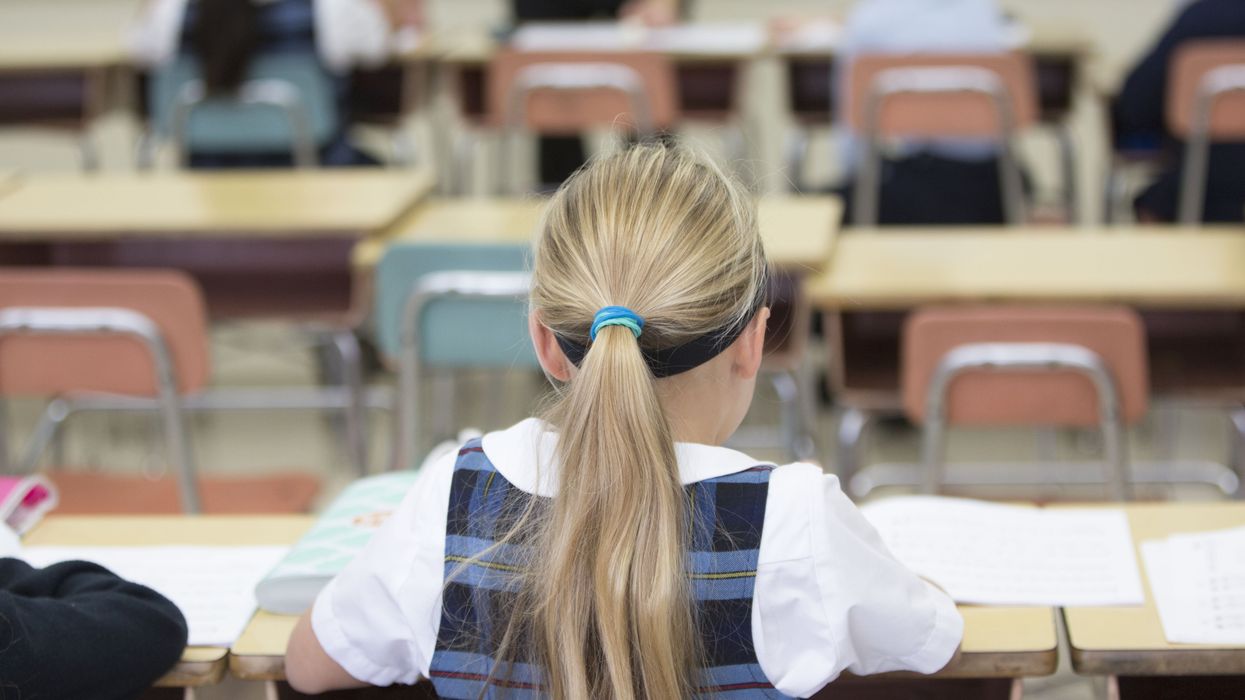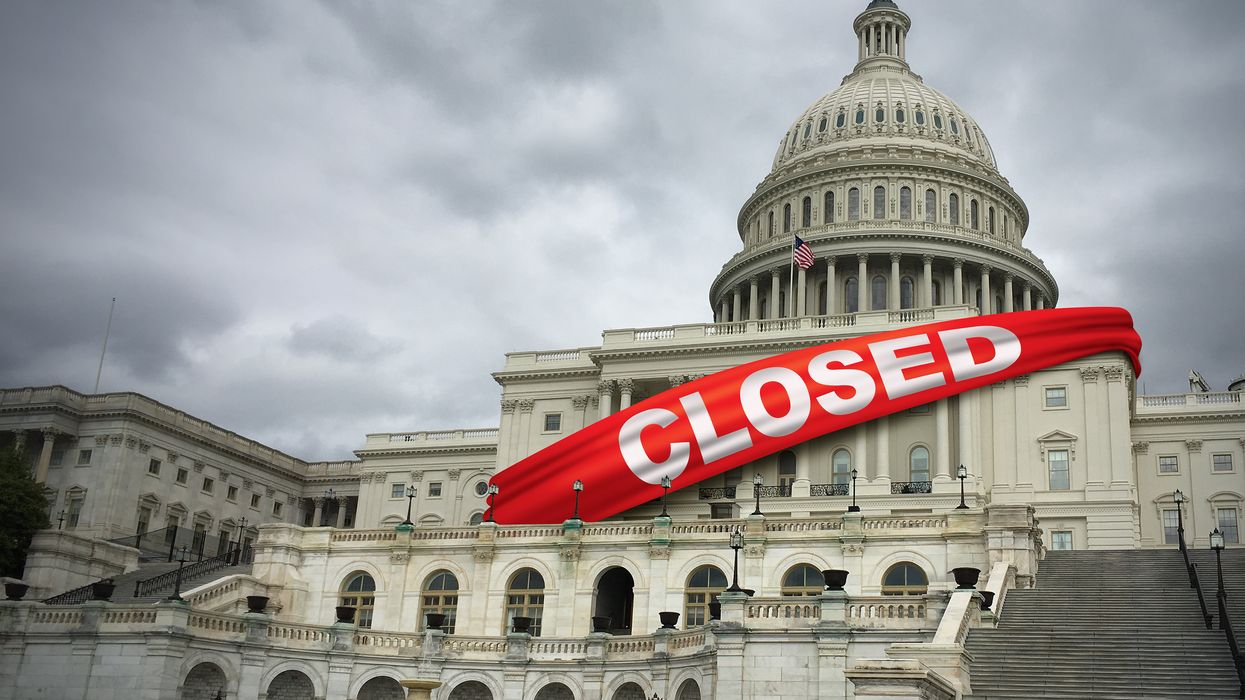Rogers is the “data wrangler” at BillTrack50. He previously worked on policy in several government departments.
This is part of a series offering a nonpartisan counter to Project 2025, a conservative guideline to reforming government and policymaking during the first 180 days of a second Trump administration. The Fulcrum's cross partisan analysis of Project 2025 relies on unbiased critical thinking, reexamines outdated assumptions, and uses reason, scientific evidence, and data in analyzing and critiquing Project 2025.
The “Mandate for Leadership: The Conservative Promise," the Heritage Foundation’s guide for a second Trump administration is more commonly known as Project 2025. One section outlines an ambitious plan to expand education savings accounts, which allow parents to decide how to spend some of the public money allocated to their children’s education, across the United States. It recommends creating a model for ESAs by allowing their use by students in active-duty military families, those studying in D.C., and students attending schools on tribal lands.
It also suggests the Individuals with Disabilities Education Act should be changed, as should the Elementary and Secondary Education Act, to allow ESAs.
Advocates of ESAs claim that increasing choice drives up the quality of education for children and is a more efficient use of public money. Opponents claim they often benefit those who are already advantaged and are a method of using taxpayer money to fund private, religious education. Is a massive expansion justified?
What is the history of vouchers and ESAs?
The Milwaukee Parental Choice Program, established in 1989, is one of the longest-running and largest voucher programs in the country. State funds are used to pay for the cost of children from low-income families to attend private schools. The real push for school choice began to gain momentum later. In 2008, the Arizona Supreme Court struck down two voucher systems on the grounds that they could be used to fund religious education and were therefore unconstitutional. Many state constitutions have specific amendments expressly prohibiting taxpayer money from going to religious organizations — generally referred to as Blaine amendments.
In response, three years later Arizona introduced the nation's first ESA program, which avoided constitutional issues by providing funds directly to parents and allowing them to choose how to spend the money. This has been the model adopted by other states.
Following the initial implementation, several states enacted similar legislation, each with its variations. For instance, Florida expanded its voucher program significantly with the Gardiner Scholarship Program, catering specifically to students with disabilities. Nevada introduced a universal ESA program in 2015, intended to be available to all public school students, though it faced legal challenges and has yet to be fully implemented.
What challenges have ESAs faced?
According to CNN, since the new rules went into effect in September 2022, Arizona’s ESA program has grown from 12,000 students to about 75,000. This has ballooned the costs — to $332 million over the last year rather than the estimated $64.5 million, at a time when Arizona is dealing with a significant budget deficit. CNN also found that wealthy communities disproportionately benefit and half the students benefiting never attended public school — they were always privately educated.
About half of the money that went to private schools in 2023 went to religious schools, the vast majority Christian. For example, Dream City Christian School received more than $1.3 million in ESA funding in 2023. Its website includes a statement of faith that rejects “‘sexual immorality” such as homosexual or bisexual behavior and states that “rejection of one’s biological sex is a rejection of the image of God within that person.”
In Texas, Gov. Greg Abbott (R) has struggled to implement such a scheme despite strong Republican majorities in the Legislature. Twenty-one such bills were introduced in 2023, all of which died. House Republicans, particularly those representing rural communities, have always been suspicious of anything that risks affecting funding for public schools. Rural communities tend not to have many private schools, and in Texas the public schools will often act as community hubs, so representatives will not support measures that risk drawing funding away from them.
Do ESAs work?
Studies have shown mixed results with some suggesting modest academic gains for participating students while others highlight persistent achievement gaps and limited long-term benefits.
For example, a 2019 study by the Urban Institute found that students who used Florida’s tax-credit scholarship program were more likely to enroll in college. However, other studies, such as those by Stanford Graduate School of Education professor Martin Carnoy, have shown no significant improvement in standardized test scores for voucher recipients.
Is Project 2025 right in seeking to expand ESAs?
Few would argue that increased parental choice and some degree of control over their child’s education is necessarily a bad thing. But it does appear that some current ESA programs are characterized by a lack of transparency over who is benefitting, and evidence suggests they are being used to send children to private Christian schools to the detriment of the wider public education system.
The jury is still out over the question of whether they actually improve educational attainment, with no strong indicators that they are some kind of silver bullet for struggling education systems. Given this, without serious research and robust safeguards (which are unlikely, given that Project 2025 actually wants to eliminate the federal Department of Education entirely) an expansion of ESAs across the country seems hard to justify.
More articles about Project 2025
- A cross-partisan approach
- An Introduction
- Rumors of Project 2025’s Demise are Greatly Exaggerated
- Department of Education
- Managing the bureaucracy
- Department of Defense
- Department of Energy
- The Environmental Protection Agency
- Education Savings Accounts
- Department of Veterans Affairs
- The Department of Homeland Security
- U.S. Agency for International Development
- Affirmative action
- A federal Parents' Bill of Rights
- Department of Labor
- Intelligence community
- Department of State
- Department of the Interior
- Federal Communications Commission
- A perspective from Europe
- Department of Health and Human Services
- Voting Rights Act
- Another look at the Federal Communications Commission




















